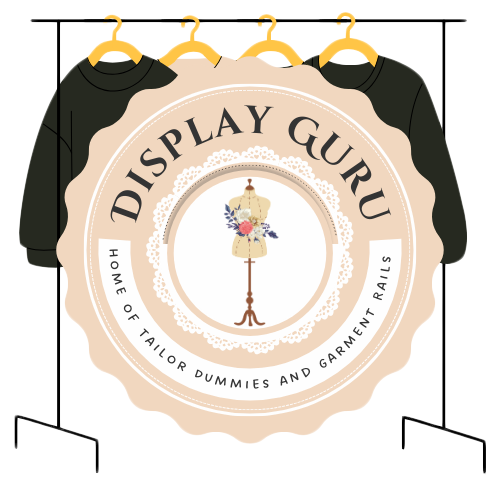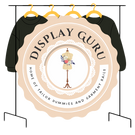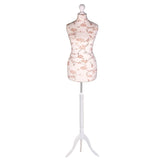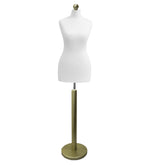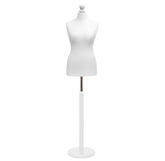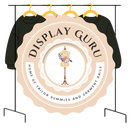8 Inspiring Fashion Design Portfolio Examples for 2025
In the competitive world of fashion, your portfolio is more than a collection of work; it's your professional handshake, your creative statement, and your ticket to the next career milestone. Whether you're a recent graduate aiming for a spot at a top design house or a seasoned professional seeking a new challenge, a compelling portfolio is non-negotiable. But what separates a good portfolio from an unforgettable one? It lies in the strategy, the narrative, and the meticulous presentation of your unique vision.
This guide moves beyond simply showing you pretty pictures. We will dissect eight distinct and powerful fashion design portfolio examples, exploring the strategic thinking behind each one. We'll break down their structure, analyse why they work, and provide actionable takeaways you can apply directly to your own work. From runway-ready collections and technical design showcases to cutting-edge digital presentations, you'll learn how to craft a narrative that not only showcases your skills but also resonates deeply with recruiters and creative directors.
Beyond the core content, a truly excellent portfolio considers its reach. Understanding how to optimise your online presence, for instance by leveraging visual platforms like Pinterest for business, can significantly amplify your work and attract the right attention. Prepare to transform your collection of designs into a strategic, career-building tool.
1. Runway/Collection-Focused Portfolio
A Runway/Collection-Focused Portfolio is the quintessential format for designers aiming to showcase their ability to create a cohesive and marketable collection. This approach is less about individual garments and more about demonstrating a singular, powerful creative vision from concept to completion. It’s a narrative tool that tells a story through carefully curated looks, highlighting thematic consistency, seasonal inspiration, and runway-ready appeal. This format is standard for applications to prestigious fashion programmes like those at Central Saint Martins or for presenting to high-end fashion houses.
Strategic Breakdown
This portfolio type excels at proving you can think like a brand's creative director. It’s not just about pretty sketches; it’s a business case for your creative direction. The goal is to show a complete, well-researched, and impeccably executed collection that could realistically walk a runway or fill a showroom.
Key Strategy: The core principle is "show, don't just tell." Each element, from the initial mood board to the final garment photography, must reinforce a central theme. This demonstrates not only creativity but also a deep understanding of collection development and brand storytelling.
Actionable Insights
To create a compelling collection-focused portfolio, you should:
- Develop a Strong Narrative: Anchor your collection with a unique and well-researched concept. This narrative should influence every choice, from colour palette to silhouette.
- Showcase Process and Evolution: Include concept sketches, fabric swatches, and technical flats. This behind-the-scenes look reveals your design process and technical skills, which are crucial for employers to see.
- Curate with Precision: Limit yourself to your 3-4 strongest collections. Quality over quantity is paramount. Each collection should demonstrate a different facet of your design identity.
The summary box below provides a quick reference for structuring each collection within your portfolio.
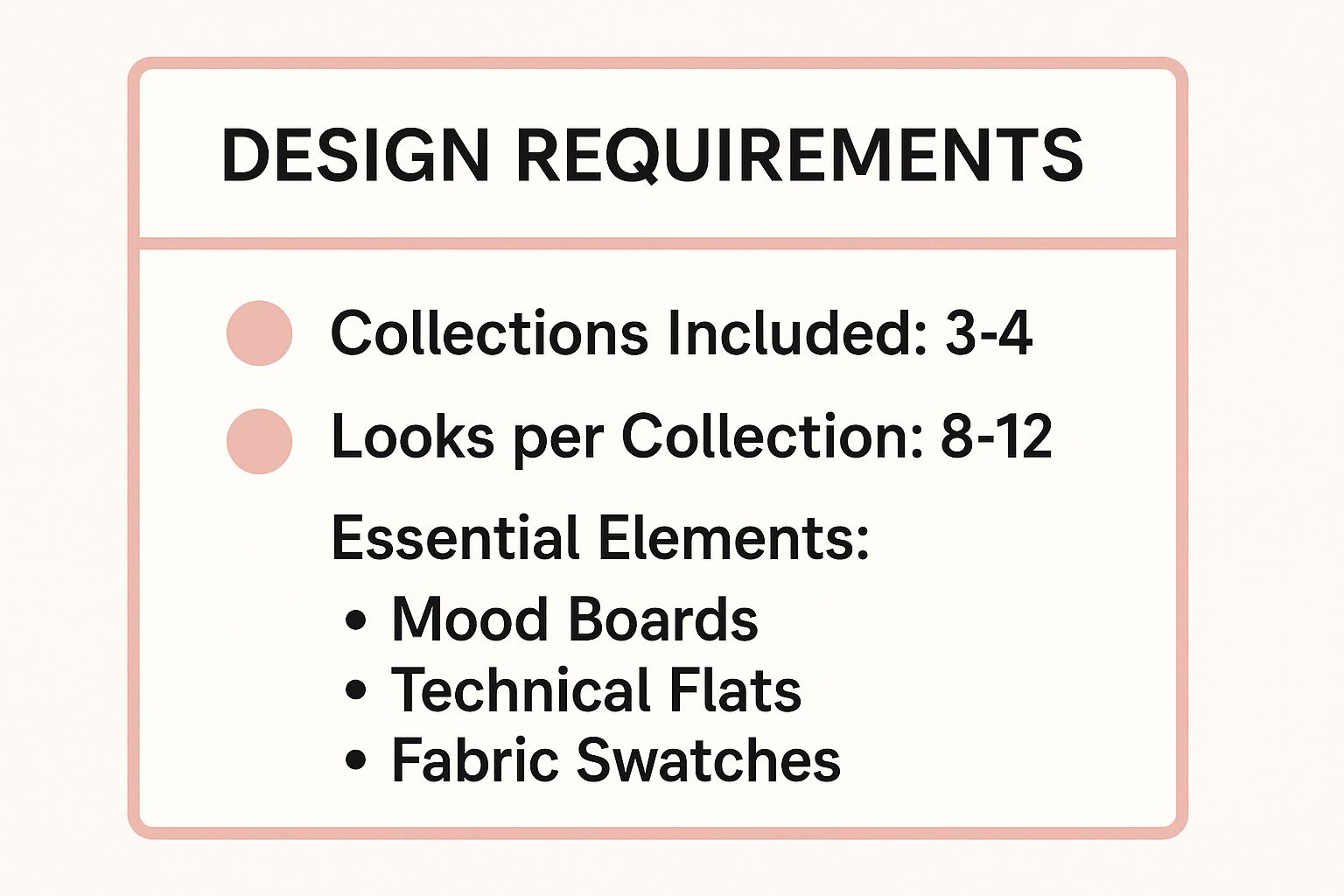
These figures provide a framework for a substantial yet focused collection, ensuring you demonstrate depth without overwhelming the viewer. Just as in retail, effective presentation can make or break a collection; you can find excellent visual merchandising guidelines that apply these principles to both physical and digital displays.
2. Conceptual/Artistic Portfolio
A Conceptual/Artistic Portfolio is an avant-garde format that prioritises groundbreaking design concepts, experimental techniques, and pure artistic expression over immediate commercial viability. This approach is designed to showcase a designer's unique creative vision, mastery of innovative technical skills, and ability to push the boundaries of what fashion can be. It's less a sales catalogue and more a fine art exhibition, demonstrating a profound intellectual and creative depth. This style is often seen in portfolios for postgraduate programmes at institutions like the Royal College of Art or from designers like Iris van Herpen and Hussein Chalayan.
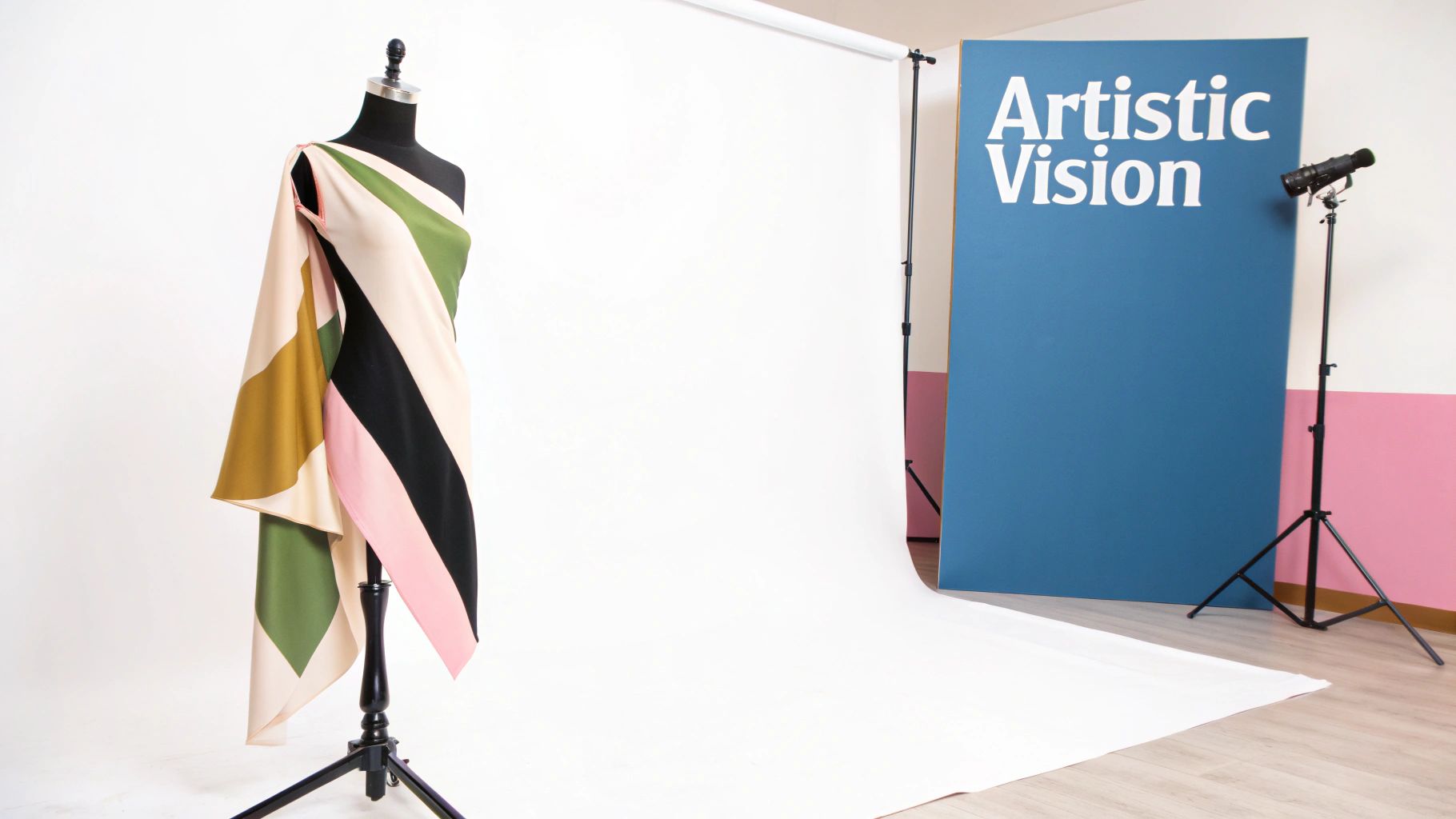
Strategic Breakdown
This portfolio type positions you as a visionary and an innovator, not just a designer. Its primary function is to communicate your unique point of view and your capacity for creative exploration. It's a powerful tool for securing roles in haute couture, conceptual design, or academia, where originality and a strong artistic statement are valued above all else. The goal is to make the viewer think and to demonstrate that your work contributes to the broader cultural conversation.
Key Strategy: The core principle is "provoke, don't just present." Every piece must be a testament to a central artistic inquiry or conceptual challenge. The portfolio should document not only the final, often abstract, outcome but also the intellectual and material journey taken to get there, proving a rigorous and thoughtful design process.
Actionable Insights
To construct an impactful conceptual portfolio, you should:
- Articulate a Clear Concept: Ground your experimental work with a strong artist statement for each project. Explain the ideas, research, and questions that drive your designs, providing context for your abstract creations.
- Document Your Process Extensively: Showcase the experimentation. Include material tests, maquettes, 3D renderings, and process photography. This demonstrates your technical ingenuity and problem-solving skills, proving that your concepts are backed by substance.
- Balance Creativity with Execution: While the ideas are paramount, the craftsmanship must be impeccable. The quality of your execution validates the ambition of your concepts and shows you can translate complex ideas into tangible forms, a key aspect of great fashion design portfolio examples.
3. Technical Design Portfolio
A Technical Design Portfolio moves the focus from conceptual artistry to the science of garment creation. This format is built to demonstrate precision, an in-depth understanding of construction, and the ability to translate a creative sketch into a flawlessly manufactured product. It showcases expertise in pattern-making, fit, and production-ready specifications, making it essential for roles in fast fashion, performance sportswear, or any brand where scale and consistency are paramount. This is one of the most practical fashion design portfolio examples for securing a role with industry giants like Zara or Uniqlo.

Strategic Breakdown
The core purpose of this portfolio is to prove you are the crucial link between creative vision and factory floor reality. It’s less about mood boards and more about meticulous tech packs, showcasing your ability to problem-solve fit issues, optimise for manufacturing, and manage costs. The goal is to present yourself as a reliable expert who ensures a design is not only beautiful but also producible, profitable, and consistent across thousands of units.
Key Strategy: The guiding principle here is "precision and problem-solving." Every entry must communicate your technical acumen. Instead of telling a creative story, you are demonstrating your ability to execute a product brief with surgical accuracy, from initial measurements to final quality control.
Actionable Insights
To assemble a powerful technical design portfolio, you should:
- Emphasise Tech Packs: Include comprehensive tech packs as the centrepiece of your projects. They should detail everything from stitch type and seam allowance to button placement and fabric composition.
- Showcase Digital Proficiency: Highlight your command of essential software. Include examples of your work in Adobe Illustrator for flats, and advanced programmes like CLO 3D or Gerber for pattern-making and virtual prototyping.
- Document Fit Corrections: Demonstrate your problem-solving skills by showing before-and-after photos of fit sessions. Annotate images to explain the issue and how your adjustments to the pattern or construction solved it. Mastering this is key, just as understanding your tools is; you can find an adjustable mannequin guide that explains how precise fit is achieved.
4. Sustainable/Ethical Fashion Portfolio
A Sustainable/Ethical Fashion Portfolio moves beyond pure aesthetics to centre on environmental consciousness, ethical production, and innovative, responsible design. This specialised approach showcases a designer's commitment to addressing the fashion industry's significant environmental and social impact. It is a powerful statement for designers aiming to work with forward-thinking brands like Patagonia or Stella McCartney, or for those launching their own purpose-driven labels. This format proves you are a designer for the future, not just the present.
Strategic Breakdown
This portfolio demonstrates a deep, holistic understanding of the entire product lifecycle, from sourcing raw materials to end-of-life considerations. It is less about fleeting trends and more about timeless design, durability, and a transparent supply chain. The goal is to present a compelling vision that is not only creatively inspiring but also commercially viable and ethically sound, showing you can balance design integrity with genuine responsibility.
Key Strategy: The core principle is "prove your purpose." Every design choice must be justified with evidence of its reduced environmental footprint or positive social impact. This portfolio serves as a research-backed thesis, demonstrating that sustainable practice is an integral part of your creative process, not an afterthought.
Actionable Insights
To build an impactful sustainable fashion portfolio, you should:
- Document Everything: Meticulously research and document your material choices, supplier information, and production processes. Include details on certifications like GOTS (Global Organic Textile Standard) or Fair Trade.
- Showcase Innovation: Highlight the use of innovative materials (e.g., mushroom leather, recycled textiles) or zero-waste pattern-cutting techniques. Demonstrate how you are pushing the boundaries of what sustainable fashion can be.
- Integrate a "Why": For each project, clearly articulate the problem you are solving. Whether it's reducing water usage, eliminating toxic dyes, or supporting artisan communities, connect your designs to a larger mission.
5. Digital/Virtual Portfolio
A Digital/Virtual Portfolio leverages cutting-edge technology to present fashion concepts in a purely digital realm. This format moves beyond static images and PDFs, incorporating 3D rendering, virtual fashion showcases, and interactive presentations to demonstrate a designer's vision. It highlights technical proficiency with industry-standard software like CLO 3D or Browzwear and an understanding of the burgeoning digital fashion market. This approach is essential for roles in virtual fashion, game design, and for brands like The Fabricant or DressX that are pioneering digital-only apparel.

Strategic Breakdown
This portfolio type demonstrates forward-thinking and adaptability, positioning you at the forefront of fashion innovation. It proves you can design for new mediums and understand the entire digital production pipeline, from 3D modelling and texturing to virtual garment simulation. The goal is to showcase not just design creativity but also technical mastery and an awareness of future industry trends, making it one of the most modern fashion design portfolio examples.
Key Strategy: The core principle is to bridge the gap between imagination and digital reality. Your portfolio must show how a garment looks, moves, and interacts with a virtual environment or avatar. This demonstrates a comprehensive skill set that is increasingly valuable in both digital-native and traditional fashion houses exploring virtual commerce.
Actionable Insights
To develop an impactful digital-first portfolio, you should:
- Master Key Software: Gain proficiency in at least one industry-standard 3D fashion design programme. Your ability to create realistic and technically sound digital garments is the foundation of this portfolio.
- Showcase Process and Versatility: Include not only the final renders but also wireframe models, texture maps, and animated turnarounds. Demonstrate your ability to create garments for different digital platforms, such as social media AR filters or gaming skins.
- Balance Digital with Physical Understanding: Where possible, show the connection between a digital design and its physical potential. Including technical flats or even a small physical sample alongside your digital work proves your designs are grounded in real-world construction principles.
6. Illustration-Heavy Portfolio
An Illustration-Heavy Portfolio champions artistic flair and the power of visual storytelling. This format prioritises the designer's ability to communicate mood, movement, and silhouette through evocative drawings and paintings. It's a testament to the belief that a compelling illustration can sell a concept just as effectively as a photograph, making it a powerful tool for designers with a strong artistic hand. This approach is favoured by those looking to work in concept art, fashion illustration, or for brands that value a hand-rendered aesthetic, harking back to legends like Rene Gruau and Antonio Lopez.
Strategic Breakdown
This portfolio type positions you as an artist first and a designer second. It's not just about showcasing garments; it’s about conveying a fantasy and capturing the essence of a collection through a unique artistic lens. The primary goal is to demonstrate a high level of skill in rendering form, texture, and character, proving you can create compelling visuals that drive a brand’s narrative forward. This is one of the more expressive fashion design portfolio examples, allowing for significant creative freedom.
Key Strategy: The core principle here is "emotion over execution." While technical accuracy is important, the main focus is on creating illustrations that are emotionally resonant and stylistically distinct. Your unique artistic signature becomes your primary selling point.
Actionable Insights
To build a captivating illustration-heavy portfolio, you should:
- Showcase Versatility: Include a diverse range of styles and media, from quick, gestural sketches in charcoal to detailed watercolour paintings or digital renderings. This demonstrates adaptability.
- Illustrate the Process: Present a clear progression from initial concept sketches to polished, full-figure illustrations. This reveals your thought process and developmental skills.
- Balance Art with Technicals: While the focus is on artistic illustration, it's crucial to include some technical flats. This assures employers that you understand garment construction and can translate your beautiful drawings into producible designs.
7. Specialty/Niche Portfolio
A Specialty/Niche Portfolio is a highly focused presentation dedicated to a specific fashion category, such as athletic wear, lingerie, children's wear, or accessories. This approach moves away from broad, collection-based showcases to demonstrate deep expertise and a nuanced understanding of a particular market segment. It is designed to prove to specialised brands, like Nike or Agent Provocateur, that you possess the specific technical knowledge, consumer insight, and design sensibility required for their unique products.
Strategic Breakdown
This portfolio type positions you as an expert, not a generalist. It’s a direct response to the industry's need for designers who understand the specific functional requirements, materials, and consumer behaviours of a niche market. The goal is to present work that shows you can innovate within the established constraints and aesthetics of a specialised field, whether that's performance metrics for sportswear or intricate construction for bridalwear.
Key Strategy: The core principle is "prove your specialisation." Every project must demonstrate a sophisticated understanding of the target demographic, functional needs, and industry standards. This means showing not just creative designs, but also the research and technical acumen that make them viable.
Actionable Insights
To create an effective specialty-focused portfolio, you should:
- Research Category-Specifics Thoroughly: Showcase your knowledge of specialised materials, construction techniques, and relevant safety or performance standards. For example, include material testing results for activewear.
- Demonstrate Deep Consumer Understanding: Tailor your projects to a precise target audience. Include market research, customer profiles, or trend analysis that justifies your design decisions for that specific niche.
- Highlight Functional Innovation: Emphasise how your designs solve a problem or improve user experience. This could be through ergonomic pattern cutting, advanced material application, or unique functional features.
A well-organised presentation is critical, especially when showcasing physical samples to potential employers or buyers. For professionals who travel to present their niche collections, using the right display equipment is key; you can find information about versatile tools like a portable clothing rack that help maintain a professional setup.
8. Process-Focused Portfolio
A Process-Focused Portfolio moves beyond the final polished garment to spotlight the journey of creation. It meticulously documents the design development process, from initial research and ideation through to prototyping, testing, and final execution. This approach is highly valued in technical design roles, sportswear, and innovation-led sectors where methodology, problem-solving, and a systematic approach are as important as the final aesthetic. It is influenced by design thinking frameworks popularised by firms like IDEO and institutions such as Stanford's d.school.
Strategic Breakdown
This portfolio format demonstrates your intellectual rigour and analytical skills. It proves you are a methodical, adaptable, and resourceful designer who can navigate complex challenges and make informed decisions. The goal is to articulate not just what you designed, but how and why you made every choice along the way, showcasing your ability to learn, iterate, and improve.
Key Strategy: The central principle is to frame design as a problem-solving exercise. Each project should clearly define a problem or user need and then walk the viewer through the steps taken to arrive at a thoughtful and effective solution. This shows a mature understanding of user-centric and commercially-aware design.
Actionable Insights
To build an effective process-focused portfolio, you should:
- Articulate the 'Why': Begin each project with a clear problem statement or design challenge. Explain the context, the target user, and the objectives you aimed to achieve.
- Visualise Your Thinking: Use a mix of mind maps, user journey charts, concept sketches, material tests, and 2D/3D prototypes. This visual evidence makes your thought process tangible and compelling.
- Show, Don't Just Tell, the Solution: Clearly connect your final design back to the initial problem. Explain how specific features or material choices address the challenges you identified during your research and testing phases.
Effectively organising this level of detail requires careful planning. Using a dedicated project planner can help structure your documentation from start to finish. You can find excellent templates and guides to help you create a sewing project planner that captures every essential step of your design journey.
8-Portfolio Style Comparison Guide
| Portfolio Type | Implementation Complexity 🔄 | Resource Requirements ⚡ | Expected Outcomes 📊 | Ideal Use Cases 💡 | Key Advantages ⭐ |
|---|---|---|---|---|---|
| Runway/Collection-Focused | High - requires coordination of multiple elements and styling 🔄🔄 | High - professional photography, fabric swatches, market research ⚡⚡ | Demonstrates commercial viability and market awareness 📊📊 | Established fashion brands, seasonal collections 💡 | Shows complete design process and market relevance ⭐⭐ |
| Conceptual/Artistic | High - experimental techniques and mixed media 🔄🔄 | High - specialized materials and production ⚡ | Highlights unique creative voice and technical innovation 📊📊 | Haute couture, luxury brands, avant-garde projects 💡 | Memorable, innovative expressions of fashion ⭐⭐ |
| Technical Design | Moderate - focus on precision and documentation 🔄 | Moderate - CAD software, technical flats ⚡ | Demonstrates practical industry skills and attention to detail 📊 | Production, manufacturing, commercial brands 💡 | Highly valued for technical expertise and fit ⭐⭐ |
| Sustainable/Ethical | Moderate to High - requires detailed research and documentation 🔄🔄 | Moderate to High - sourcing sustainable materials, certifications ⚡ | Shows commitment to environmental responsibility 📊 | Conscious brands, eco-focused fashion 💡 | Aligns with industry trends and ethical standards ⭐⭐ |
| Digital/Virtual | High - involves 3D modeling, interactive tools 🔄🔄 | Moderate to High - software, tech proficiency ⚡⚡ | Demonstrates tech proficiency and innovative presentation 📊 | Tech-forward companies, digital fashion platforms 💡 | Cost-effective, eco-friendly, versatile presentations ⭐⭐ |
| Illustration-Heavy | Moderate - focused on artistic skill and presentation 🔄 | Low to Moderate - art supplies and digital tools ⚡ | Highlights artistic talent and communication skills 📊 | Creative agencies, design houses, illustration roles 💡 | Cost-effective, visually impactful storytelling ⭐ |
| Specialty/Niche | Moderate - requires specialized knowledge and targeted research 🔄 | Moderate - category-specific materials and testing ⚡ | Demonstrates deep expertise in specific market segments 📊 | Niche market employers, specialized product categories 💡 | Less competition, clear market positioning ⭐ |
| Process-Focused | High - detailed process documentation and iterative work 🔄🔄 | Moderate - organization tools, documentation ⚡ | Shows systematic thinking and problem-solving 📊 | Design management, consultancy, methodology-driven roles 💡 | Demonstrates methodical approach and learning ability ⭐ |
Crafting Your Narrative: The Final Polish
Throughout this guide, we have journeyed through a diverse landscape of fashion design portfolio examples, each showcasing a unique strategic approach. From the commercial prowess of the Runway/Collection-Focused Portfolio to the specialised mastery of the Technical Design Portfolio, we've seen how designers leverage their presentations to achieve specific career goals. We’ve analysed the narrative power of a Conceptual book, the market-conscious angle of a Sustainable collection, and the innovative edge of a Digital/Virtual presentation.
The ultimate takeaway is not to replicate any single example verbatim. Instead, the most potent portfolios synthesise elements from these archetypes to build a unique and compelling argument for your talent. A portfolio is your professional thesis; it must be focused, coherent, and meticulously supported by evidence, from initial ideation to final execution.
Synthesising Your Unique Vision
Your task now is to become a strategic editor of your own work. Consider the powerful illustrations of an Illustration-Heavy Portfolio combined with the detailed construction notes from a Technical one. Think about how the narrative depth of a Process-Focused Portfolio can add significant weight and authenticity to a more commercial, Collection-Focused book.
To achieve this synthesis, ask yourself these critical questions:
- Primary Message: What is the single most important thing I want a creative director or recruiter to know about me? Am I an innovator, a technician, a storyteller, or a market-savvy strategist?
- Target Audience: Who am I creating this for? The needs of a luxury haute couture house are vastly different from those of a fast-fashion giant or a theatrical production company.
- Core Strengths: Which of my skills are most developed and unique? Your portfolio must be an honest and confident reflection of what you do best.
Strategic Insight: The strongest portfolios blend archetypes. They demonstrate not just creative vision but also the technical skill to realise it and the process-driven mindset to repeat that success consistently. Your ability to combine these facets is what separates a good portfolio from an unforgettable one.
Actionable Steps to Finalise Your Portfolio
As you move from analysis to action, concentrate on the final layers of polish that signal professionalism. Every choice, from the font you use to the paper you print on, contributes to your overall brand narrative. When refining your fashion design portfolio, consider how effective visual storytelling techniques can enhance your narrative and captivate viewers, ensuring your designs communicate deeply. This final stage is about ensuring the presentation quality matches your design quality.
Remember that meticulous organisation is non-negotiable. Whether you are showcasing your collection on high-quality tailor dummies for a physical review or creating flawless digital mock-ups, the presentation must be impeccable. This attention to detail demonstrates respect for your own work and for the viewer's time, making a powerful final impression. Ultimately, the exceptional fashion design portfolio examples we've examined are successful because they are more than just collections of work; they are confident, clear, and compelling arguments for each designer's unique place in the fashion industry. Use these blueprints to construct your own powerful story.
Ready to bring your physical collection to life with the same professionalism seen in your portfolio? Explore the curated selection of professional-grade mannequins, tailor's dummies, and garment rails at Display Guru. Ensure your finished pieces are presented with the quality and care they deserve. Visit Display Guru today to find the perfect display solutions for your designs.
